Effect of UV and IR Radiation on the Electrical Characteristics of Ga2O3/ZnGeP2 Hetero-Structures
Abstract
:1. Introduction
- In LIDAR systems for remote detection and quantification of gases based on the effect of resonant absorption. The range from 3 to 10 μm is most effective [7];
- In medicine, e.g., minimally invasive neurosurgery (tissue ablation) with a wavelength of 6.45 μm, requiring single high-energy pulses [8];
- In the evaporation and deposition of thin-film polymers;
- In spectroscopy and other scientific applications where high spatial and temporal resolution is required, e.g., excitation and vibrational transitions in molecules or inter-band transitions in semiconductor structures;
- Special military and civilian applications.
2. Preparation of ZGP Substrates
3. Experimental Methodology
4. Experimental Data and the Discussion
4.1. Electrical and Photoelectric Characteristics of Structures without Annealing
4.2. Electrical and Photoelectric Characteristics of Ga2O3/ZnGeP2 Structures after Annealing
5. Conclusions
Author Contributions
Funding
Institutional Review Board Statement
Informed Consent Statement
Data Availability Statement
Conflicts of Interest
References
- Kitaeva, G.K. Terahertz generation by means of optical lasers. Laser Phys. Lett. 2008, 5, 559–576. [Google Scholar] [CrossRef]
- Grigoreva, V.S.; Prochukhan, V.D.; Rud, Y.V.; Yakovenko, A.A. Some electrical properties of high-resistance ZnGeP2 single crystals. Phys. Status Solidi (a) 1973, 17, K69–K73. [Google Scholar] [CrossRef]
- Carnio, B.; Greig, S.; Firby, C.; Zawilski, K.; Schunemann, P.; Elezzabi, A. Terahertz electro-optic detection using a ⟨012⟩-cut chalcopyrite ZnGeP2 crystal. Appl. Phys. Lett. 2016, 108, 261109. [Google Scholar] [CrossRef]
- Barnoski, M. In the Integral Opticus/m. Barnoski, Ten, J. Goel et al. // In Order. M. Barnosky; Per. with English. in Order. T.A. Shmaonova; Mir: Moscow, Russia, 1977. [Google Scholar]
- Brudnyĭ, V.N.; Voevodin, V.G.; Grinyaev, S.N. Deep levels of intrinsic point defects and the nature of “anomalous” optical absorption in ZnGeP2. Phys. Solid State 2006, 48, 1949–1961. [Google Scholar] [CrossRef]
- Pearton, S.J.; Yang, J.; Cary, P.H.; Ren, F.; Kim, J.; Tadjer, M.J.; Mastro, M.A. A review of Ga2O3 materials, processing, and devices. Appl. Phys. Rev. 2018, 5, 011301. [Google Scholar] [CrossRef]
- Lin, C.-H.; Lee, C.-T. Ga2O3-based solar-blind deep ultraviolet light-emitting diodes. J. Lumin. 2020, 224, 117326. [Google Scholar] [CrossRef]
- Roy, R.; Hill, V.G.; Osborn, E.F. Polymorphism of Ga2O3 and the system Ga2O3–H2O. J. Am. Chem. Soc. 1952, 74, 719–722. [Google Scholar] [CrossRef]
- Zhang, D.; Dong, S. Challenges in band alignment between semiconducting materials: A case of rutile and anatase TiO2. Prog. Nat. Sci. Mater. Int. 2019, 29, 277–284. [Google Scholar] [CrossRef]
- Zhang, Z.; Farzana, E.; Arehart, A.R.; Ringel, S.A. Deep level defects throughout the bandgap of (010) β-Ga2O3 detected by optically and thermally stimulated defect spectroscopy. Appl. Phys. Lett. 2016, 108, 052105. [Google Scholar] [CrossRef]
- Boyd, G.D.; Beuhler, E.; Stortz, F.G. Linear and nonlinear optical properties of ZnGeP2 and CdSe. Appl. Phys. Lett. 1971, 18, 301–304. [Google Scholar] [CrossRef]
- Romanovskii, O.; Sadovnikov, S.A.; Kharchenko, O.V.; Yakovlev, S.V. Development of near/mid IR differential absorption OPO lidar system for remote gas analysis of the atmosphere. In Proceedings of the Remote Sensing of Clouds and the Atmosphere XXIV, Strasbourg, France, 9–11 September 2019; Volume 11152, pp. 236–243. [Google Scholar]
- Lv, Z.; Shen, Y.; Zong, N.; Bian, Q.; Wang, E.-P.; Chang, J.-Q.; Bo, Y.; Cui, D.-F.; Peng, Q.-J. 1.53 W all-solid-state nanosecond pulsed mid-infrared laser at 6.45 µm. Opt. Lett. 2022, 47, 1359. [Google Scholar] [CrossRef] [PubMed]
- Wang, X.; Chen, Z.; Guo, D.; Zhang, X.; Wu, Z.; Li, P.; Tang, W. Optimizing the performance of a β-Ga2O3 solar-blind UV photodetector by compromising between photoabsorption and electric field distribution. Opt. Mater. Express 2018, 8, 2918–2927. [Google Scholar] [CrossRef]
- Li, Z.; An, Z.; Xu, Y.; Cheng, Y.; Cheng, Y.; Chen, D.; Feng, Q.; Xu, S.; Zhang, J.; Zhang, C.; et al. Improving the production of high-performance solarblind b-Ga2O3 photodetectors by controlling the growth pressure. J. Mater. Sci. 2019, 54, 10335–10345. [Google Scholar] [CrossRef]
- Lia, M.-Q.; Yanga, N.; Wanga, G.-G.; Zhanga, H.-Y.; Hana, J.-C. Highly preferred orientation of Ga2O3 films sputtered on SiC substrates for deep UV photodetector application. Appl. Surf. Sci. 2019, 471, 694–702. [Google Scholar] [CrossRef]
- Kalygina, V.; Vishnikina, V.; Petrova, Y.; Prudaev, I.; Yaskevich, T. Photovoltaic characteristics of structures metal-Ga2O3-GaAs. Phys. Technol. Semicond. 2015, 49, 357–363. [Google Scholar]
- Yu, J.; Lou, J.; Wang, Z.; Ji, S.; Chen, J.; Yu, M.; Peng, B.; Hu, Y.; Yuan, L.; Zhang, Y.; et al. Surface modification of β-Ga2O3 layer using Pt nanoparticles for improved deep UV photodetector performance. J. Alloys Compd. 2021, 872, 159508. [Google Scholar] [CrossRef]
- Hou, X.; Zou, Y.; Ding, M.; Qin, Y.; Zhang, Z.; Ma, X.; Tan, P.; Yu, S.; Zhou, X.; Zhao, X.; et al. Review of polymorphous Ga2O3 materials and their solar-blind photodetector applications. J. Phys. D Appl. Phys. 2020, 54, 043001. [Google Scholar] [CrossRef]
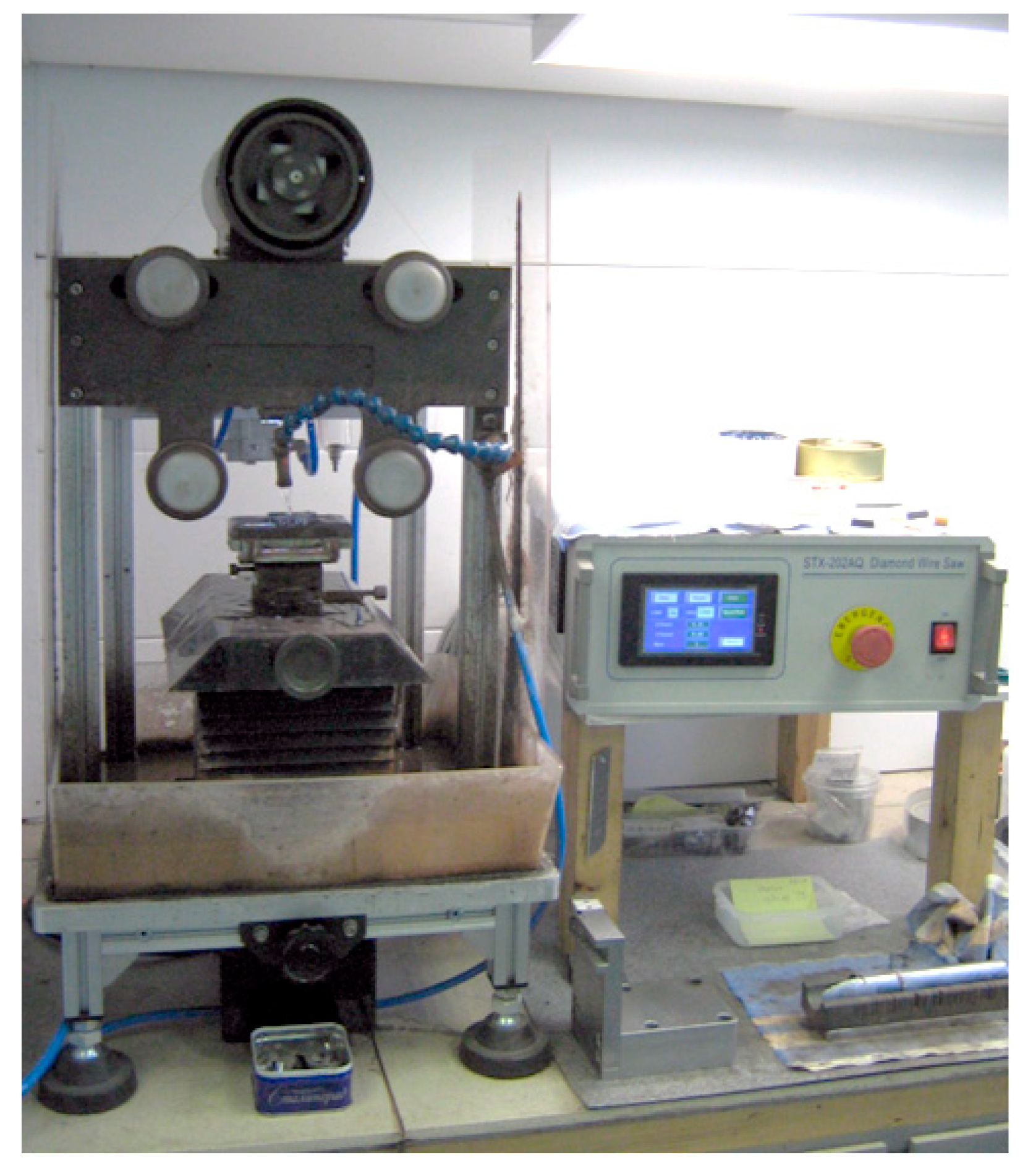
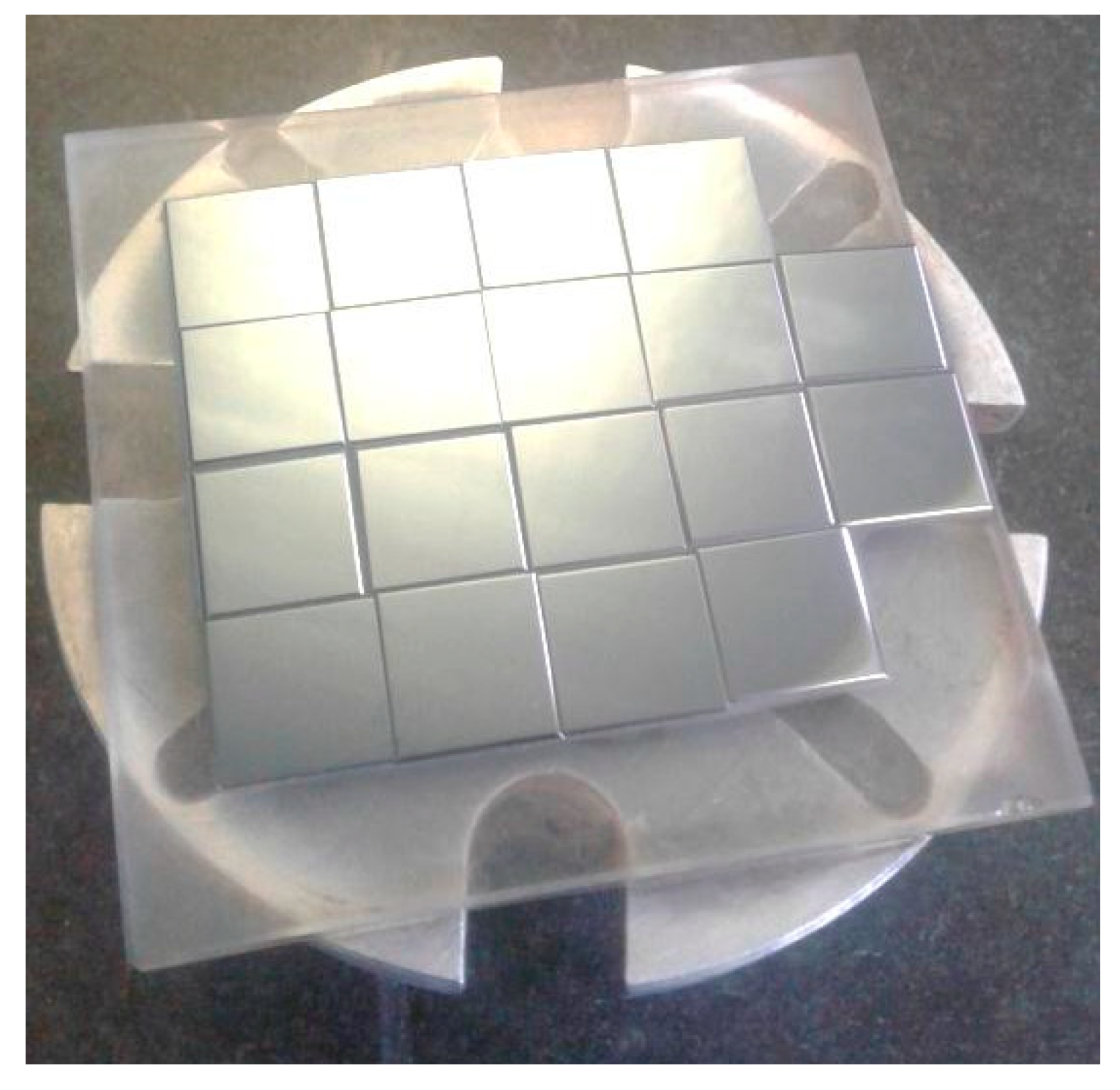
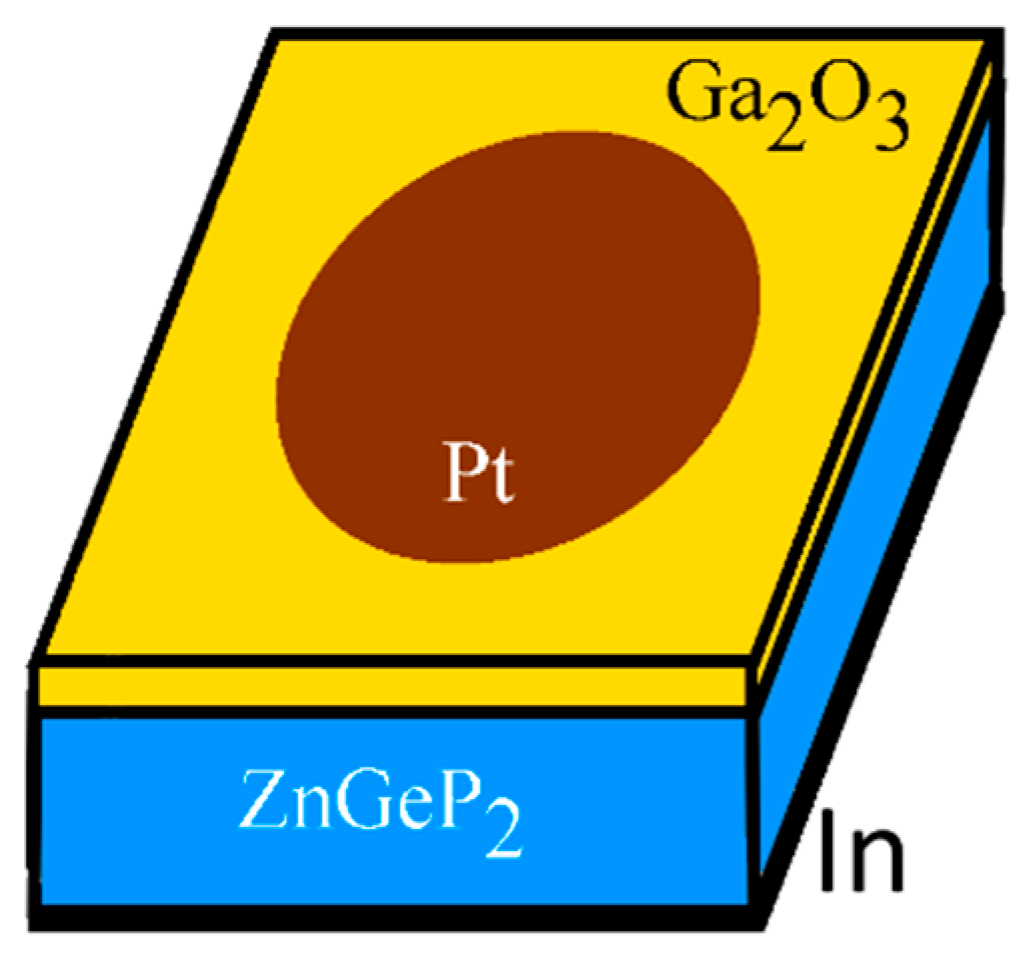
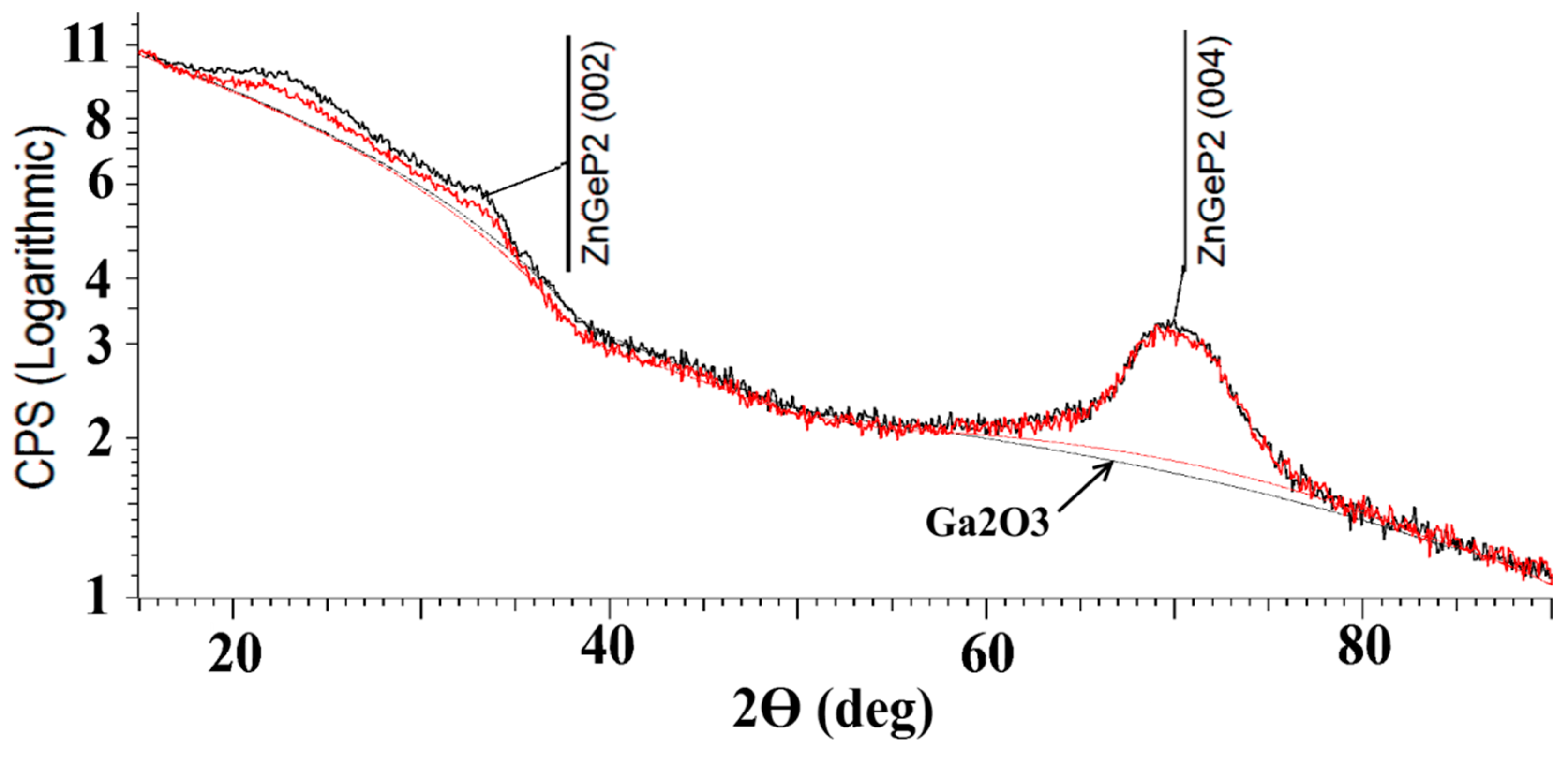
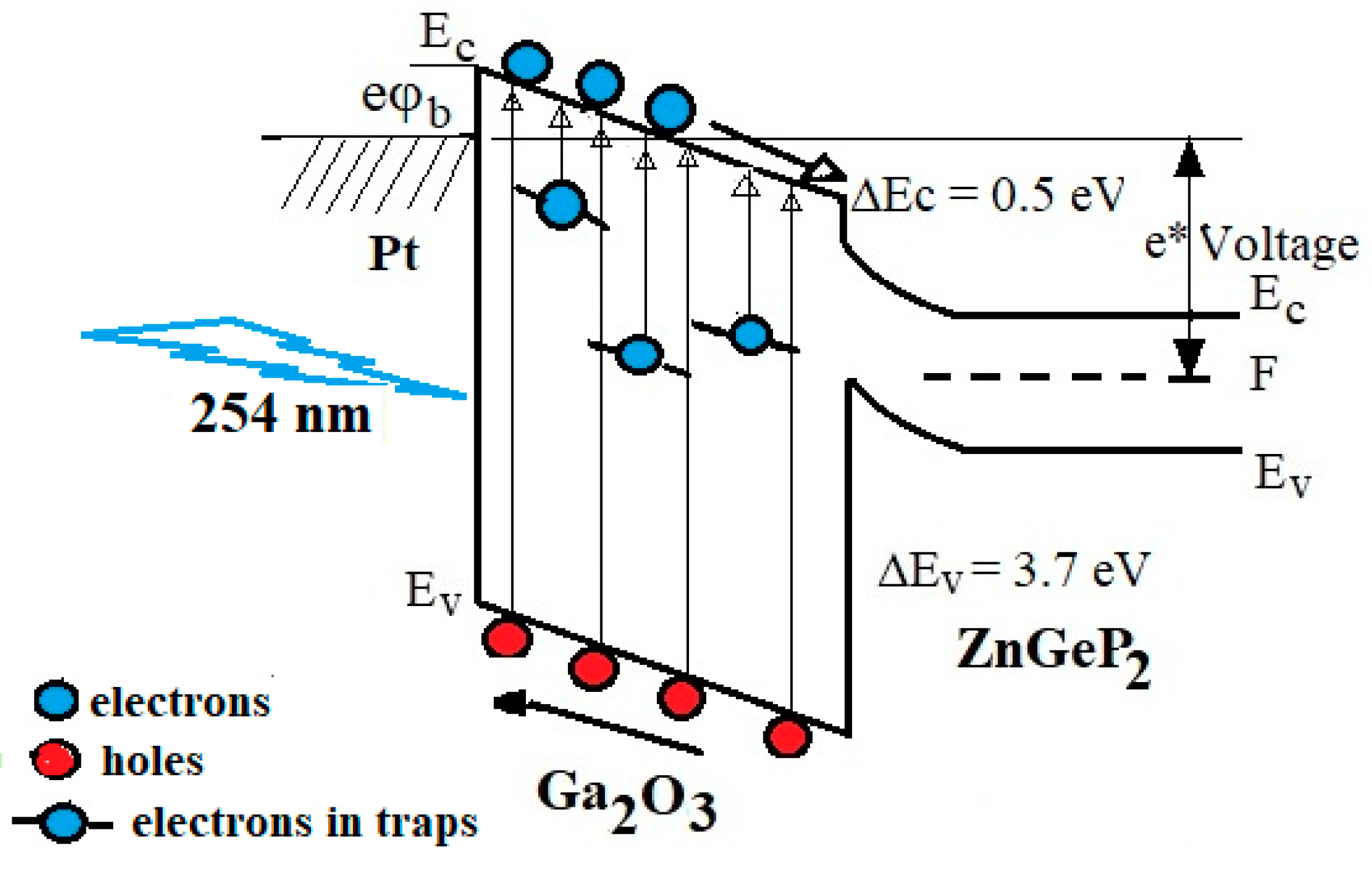
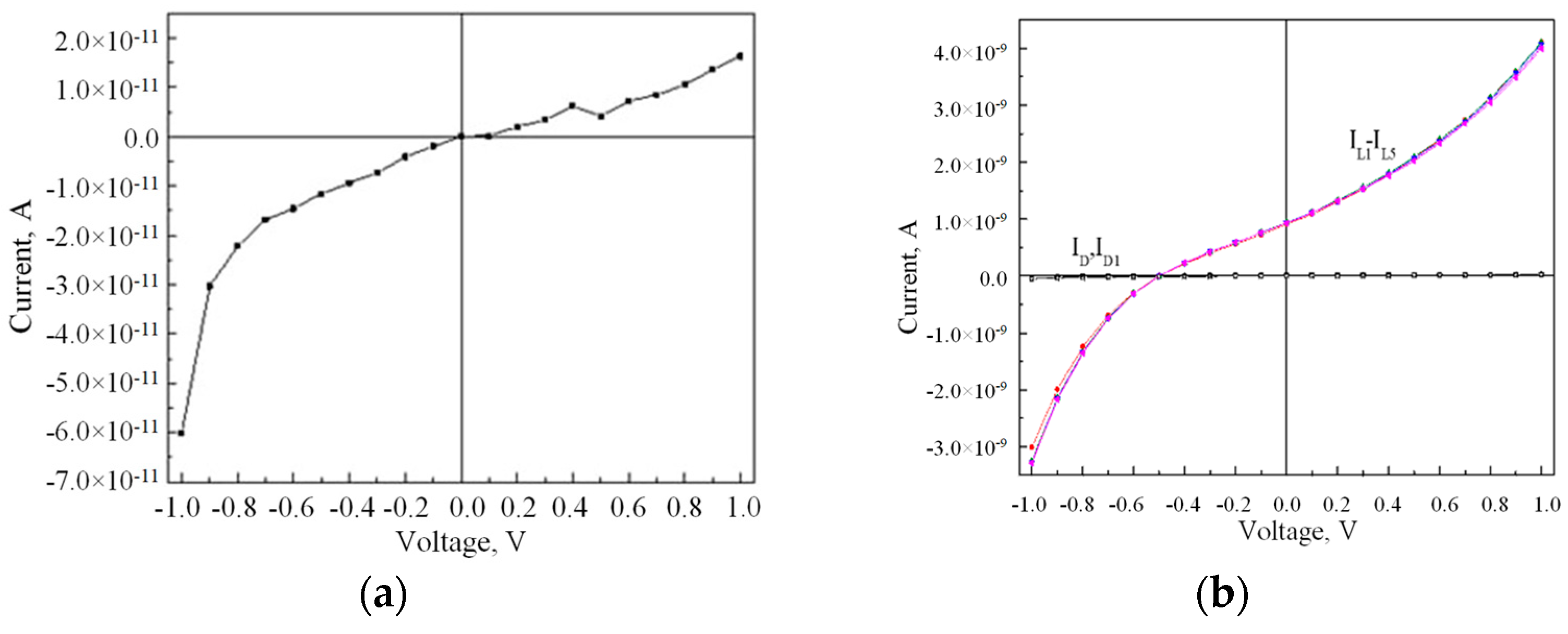
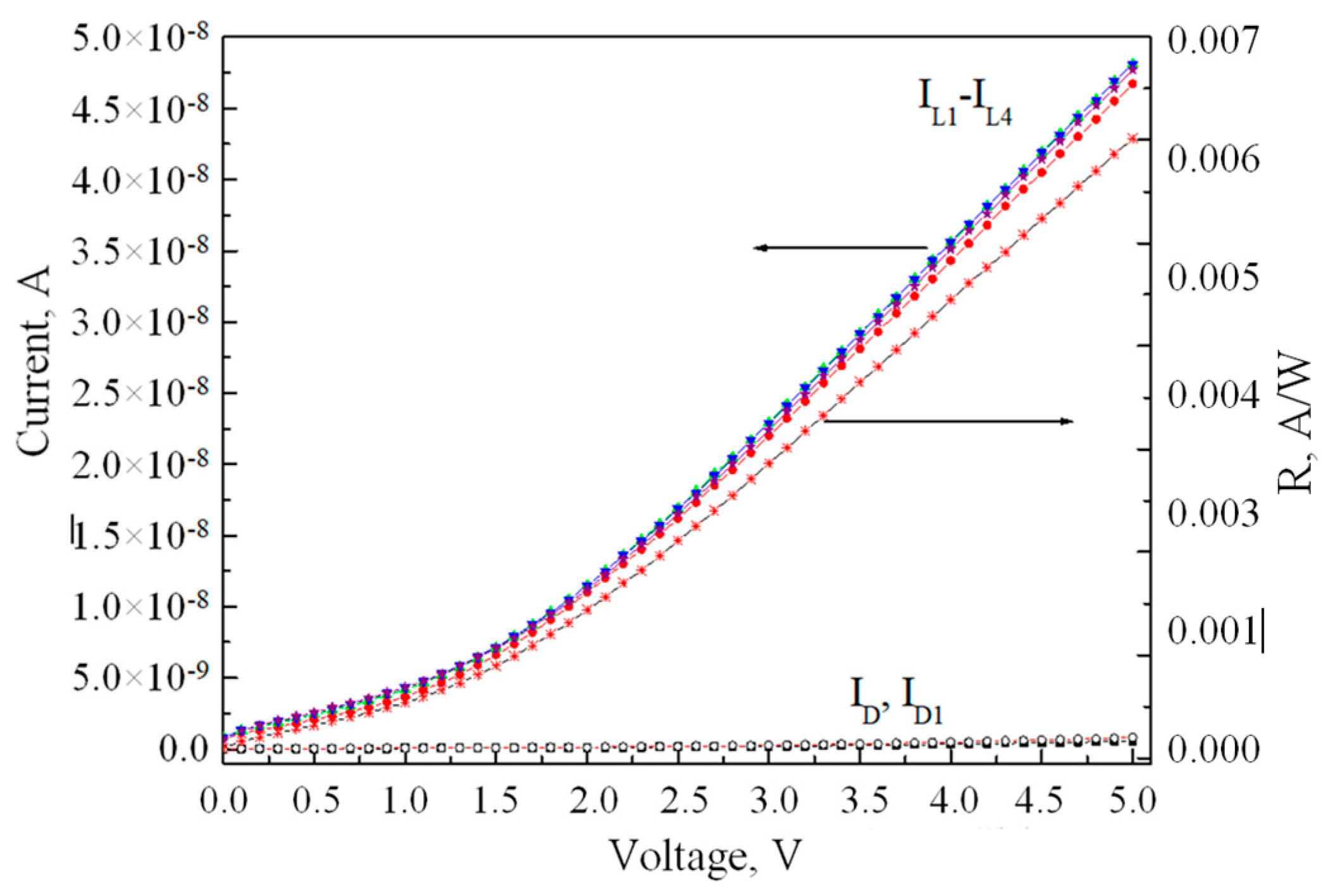
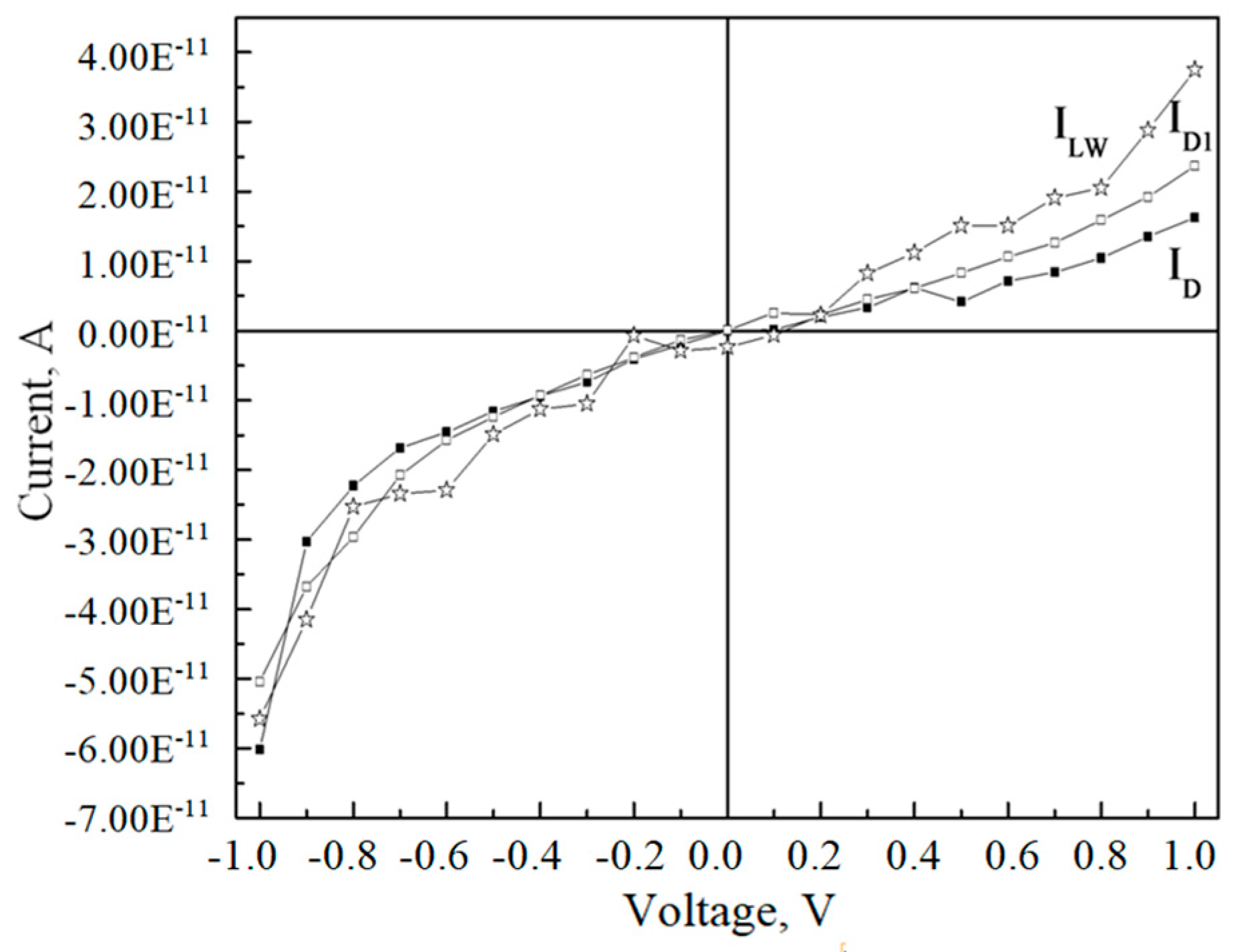
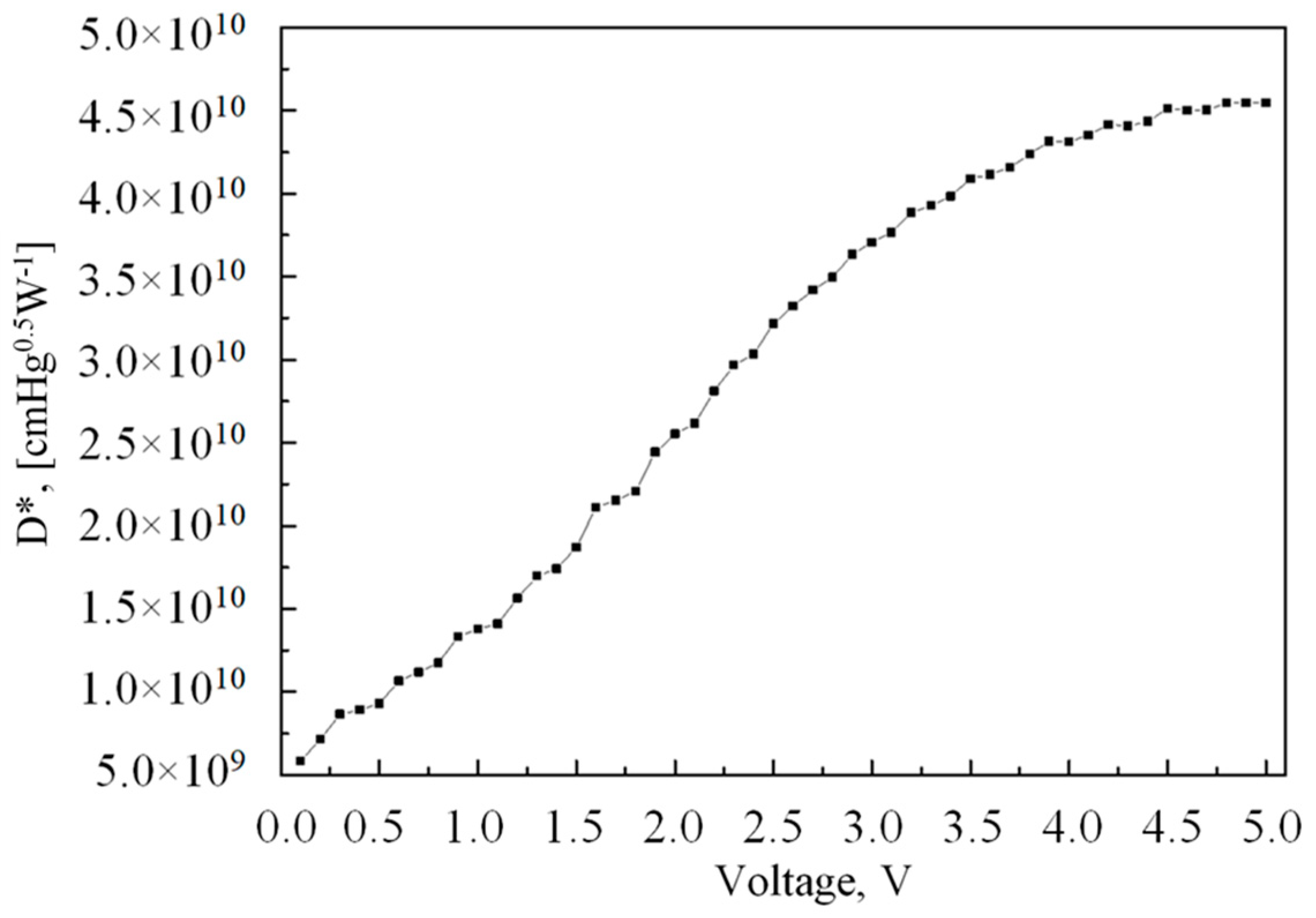
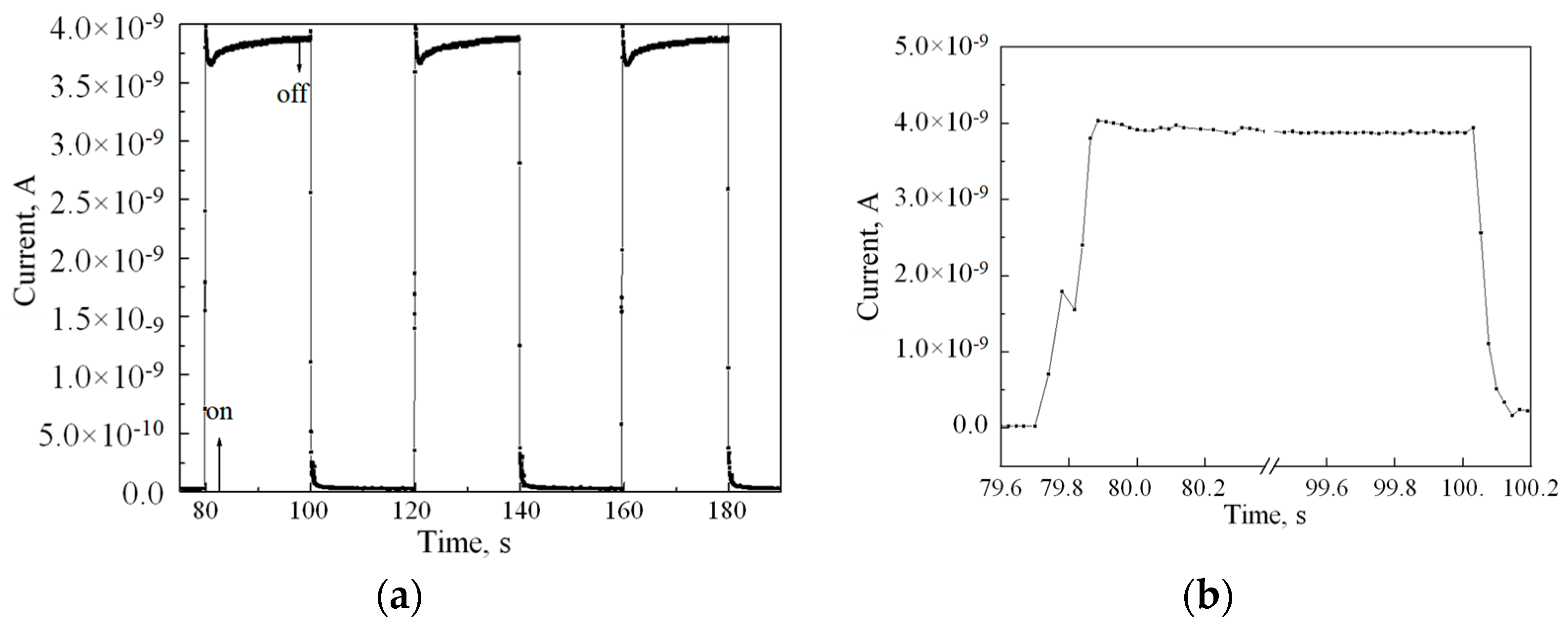
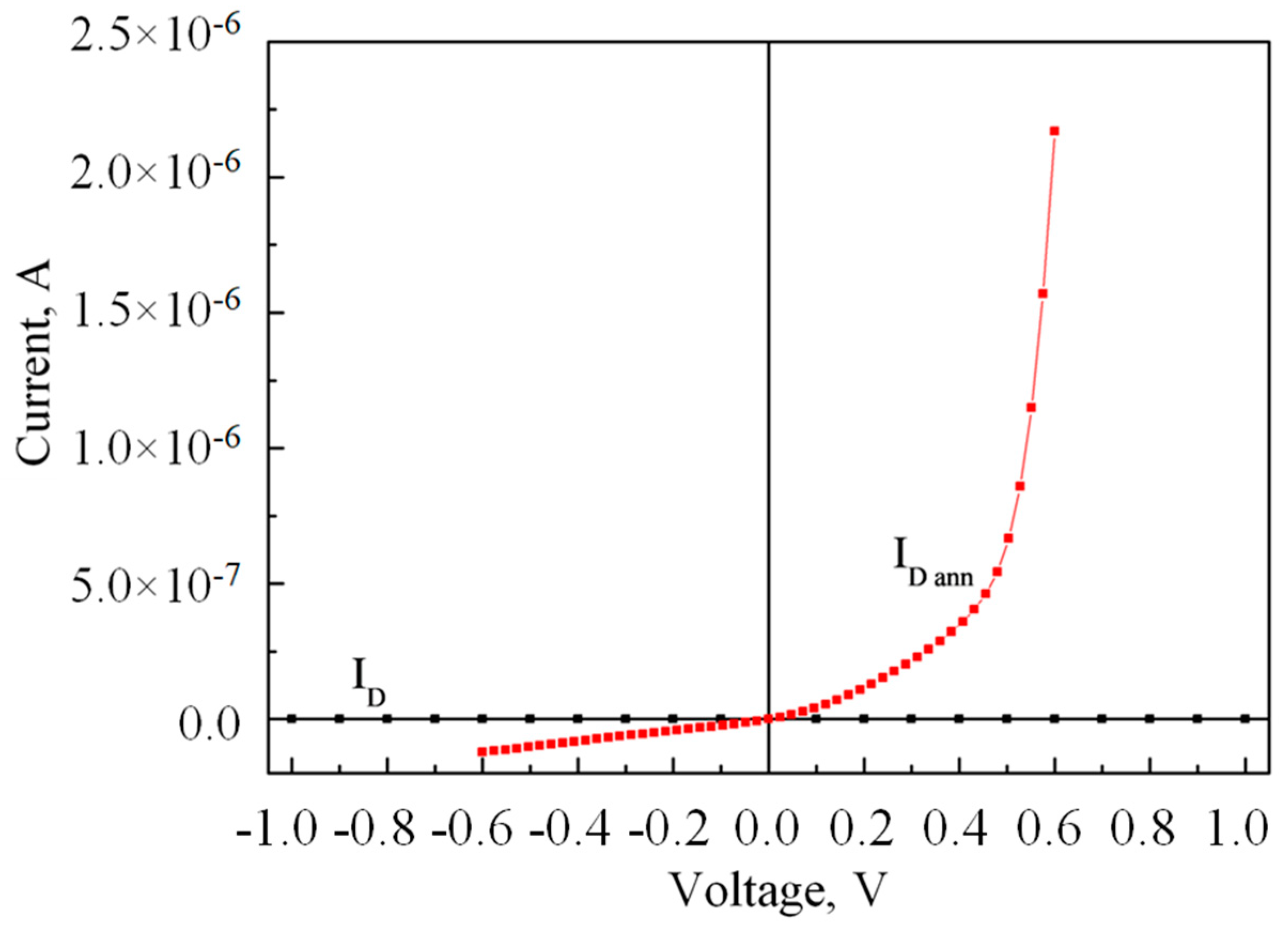


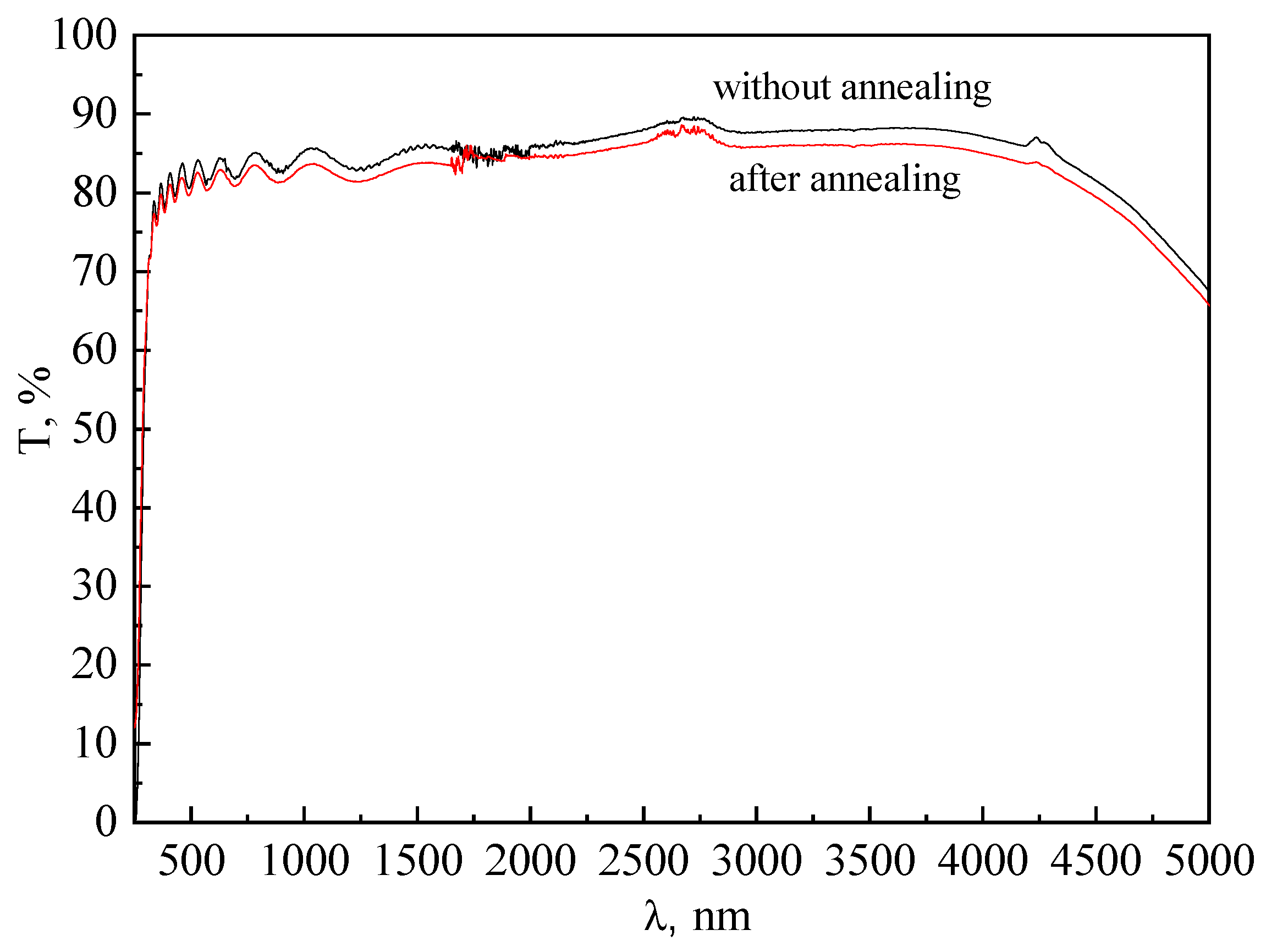
| Doping Impurity | Impurity Action | P (cm−3) | Up (cm2/V s) | Ea (eV) |
|---|---|---|---|---|
| - | - | 1.5 × 1010 | 60 | 0.65 |
| Au | inactive | 2.5 × 1010 | 30 | 0.65 |
| Cu | inactive | 1.0 × 1010 | 13 | - |
| Se | acceptor | 2.5 × 1014 | 0.5 | 0.4 |
| Ga | acceptor | 8.7 × 1016 | 0.18 | 0.31 |
| In | acceptor | 1.4 × 1016 | 0.13 | - |
Disclaimer/Publisher’s Note: The statements, opinions and data contained in all publications are solely those of the individual author(s) and contributor(s) and not of MDPI and/or the editor(s). MDPI and/or the editor(s) disclaim responsibility for any injury to people or property resulting from any ideas, methods, instructions or products referred to in the content. |
© 2023 by the authors. Licensee MDPI, Basel, Switzerland. This article is an open access article distributed under the terms and conditions of the Creative Commons Attribution (CC BY) license (https://creativecommons.org/licenses/by/4.0/).
Share and Cite
Kalygina, V.; Podzyvalov, S.; Yudin, N.; Slyunko, E.; Zinoviev, M.; Kuznetsov, V.; Lysenko, A.; Kalsin, A.; Kopiev, V.; Kushnarev, B.; et al. Effect of UV and IR Radiation on the Electrical Characteristics of Ga2O3/ZnGeP2 Hetero-Structures. Crystals 2023, 13, 1203. https://doi.org/10.3390/cryst13081203
Kalygina V, Podzyvalov S, Yudin N, Slyunko E, Zinoviev M, Kuznetsov V, Lysenko A, Kalsin A, Kopiev V, Kushnarev B, et al. Effect of UV and IR Radiation on the Electrical Characteristics of Ga2O3/ZnGeP2 Hetero-Structures. Crystals. 2023; 13(8):1203. https://doi.org/10.3390/cryst13081203
Chicago/Turabian StyleKalygina, Vera, Sergey Podzyvalov, Nikolay Yudin, Elena Slyunko, Mikhail Zinoviev, Vladimir Kuznetsov, Alexey Lysenko, Andrey Kalsin, Victor Kopiev, Bogdan Kushnarev, and et al. 2023. "Effect of UV and IR Radiation on the Electrical Characteristics of Ga2O3/ZnGeP2 Hetero-Structures" Crystals 13, no. 8: 1203. https://doi.org/10.3390/cryst13081203
APA StyleKalygina, V., Podzyvalov, S., Yudin, N., Slyunko, E., Zinoviev, M., Kuznetsov, V., Lysenko, A., Kalsin, A., Kopiev, V., Kushnarev, B., Oleinik, V., Baalbaki, H., & Yunin, P. (2023). Effect of UV and IR Radiation on the Electrical Characteristics of Ga2O3/ZnGeP2 Hetero-Structures. Crystals, 13(8), 1203. https://doi.org/10.3390/cryst13081203








